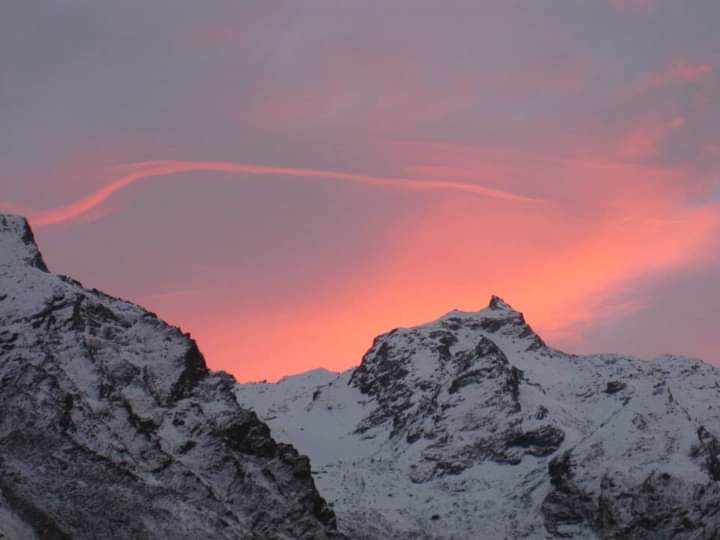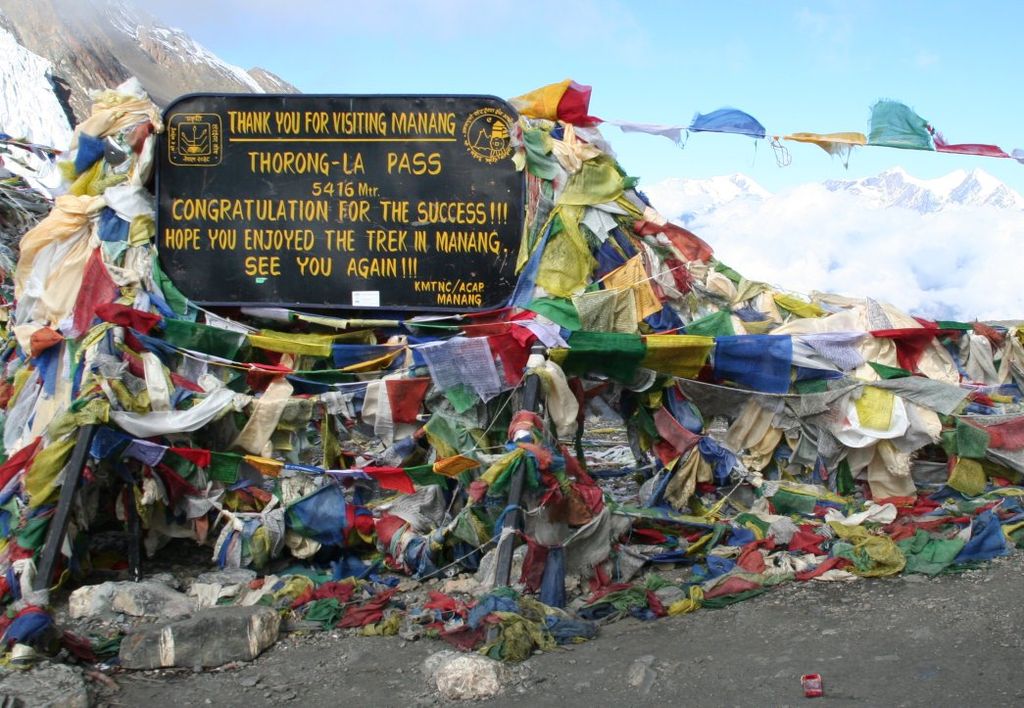Trekking trip to the former Kingdom of Mustang to Lo Manthang
13-day trekking (6 – 9 hours daily)
Follow the Kali Gandaki river into a desert-like high mountain landscape.
In the town of Samar, enjoy fantastic views of the Annapurna and Nilgiri groups.
Hike from Yara to the rock and cave monastery of Lori Gompa.
The village of Lo Manthang with its gompas and the old royal residence
Stroll through the holy place Muktinath for Buddhists and Hindus
Pay a visit to the UNESCO World Heritage sites in lively Kathmandu
Itinerary
Day 1 – Arrival in Kathmandu
When you arrive you will be transferred to the hotel in Kathmandu with our local guide. Depending on the time of arrival with the group flight or other flights, there is an opportunity to relax and take a first stroll through the old town of Kathmandu. Hotel rooms may not be available until after midday. In the evening we meet for a welcome dinner at the hotel or in a nearby restaurant – a good opportunity to get to know each other and discuss the activities of the following days.
Day 2 Drive to Pokhara
We travel by bus from Kathmandu to Pokhara. We cross the Thankot Pass (1,500 m) before winding down into the Trisuli Valley. The partly bumpy, partly modern road follows the river through constantly changing scenery to Mugling. Now we go along the Marsyandi and Seti Khola (Khola = river). On the way, when the weather is good, the snow-white mountain ranges of Ganesh, Manaslu and Annapurna can be seen in the distance, with villages and terraced fields alternating in the foreground. In the afternoon we arrive in Pokhara and move into our hotel rooms. The relatively mild climate favors diverse, subtropical vegetation. Depending on the time of arrival in Pokhara, there is still the opportunity to take a walk along the promenade of Phewa Lake or the town’s shopping street.
Day 3 Flight to Jomsom – trekking start and hike to Marpha
In the morning we fly with a propeller plane from Pokhara through the deep gorge of Kali Gandaki, located between the Dhaulagiri and Annapurna massifs, to Jomsom at an altitude of around 2,750 m. We hike leisurely down the valley to Marpha (2,650 m) and stay in a lodge. We are already at a relatively high altitude, which is why it is very important to walk slowly and steadily, especially during the first few days. In the afternoon we can take a detour to the orchards of Old Marpha, located high in a side valley, and then visit the pretty, long village.
Day 4 Trek via Ekle Bhatti to Kagbeni
We go back to Jomsom and then cross the suspension bridge over the Kali Gandaki to the east bank. We hike along the old caravan route through a gravel valley full of rubble, known for its strong winds, to Kagbeni (2,810 m). A defiant gompa, stone houses and dark, winding streets characterize this settlement inhabited by people of Tibetan descent with a view of Tilicho Peak and Dhaulagiri. We have enough time to discover the medieval-looking border village or to walk up a hill towards Muktinath.
Day 5 Hike via Chusang to Tsele
Today the time has come: at the exit from Kagbeni we enter the formerly forbidden kingdom of Lo, the former name of the region. We follow the course of the Kali Gandaki on the east side to Chusang (from here the river is called Mustang Khola) and then climb to the town of Tsele (3,050 m).
Day 6 Hike via Samar to Syangboche with several passes
Our climb leads through a gorge with fantastic views down to the Taklam La pass (3,624 m) and further to the Dajori La pass (3,736 m). We then go a little way down to the leafy town of Samar (3,660 m), where we have an impressive view of the Annapurna and Nilgiri groups. We reach our daily destination Syangboche (3,800 m) via the other passes Bhena La (3,838 m) and Yamda La (3,860 m).
Day 7 Hike via Ghemi to Tsarang with several passes
On a scenic panoramic path and over the two passes Nyi La (4,010 m) and Ghemi La (3,765 m) we reach Ghemi (3,520 m), the third largest town in Mustang. There was once a camp of Tibetan Khampa (freedom fighters) who fought against Chinese troops from exile. After our lunch break, we cross the Ghemi Khola – a tributary of the Khali Gandaki – and a little later reach the longest Mani wall in Mustang. This is followed by a somewhat arduous climb to Tsarang La (3,870 m). From here we go steadily downhill to our destination for the day, Tsarang (3,560 m), the second largest town in Mustang. 800 residents live in the idyllic town. Tsarangs Gompa was one of the greatest monasteries of the Sakya school in ancient times. The Tor Chorten, a small Buddhist shrine outside the city, is a popular photo opportunity.
Day 8 Hike to Lo Ghekar Gompa and over Marang La to Lo Manthang
Another long stage is on the agenda. First our route leads to the Lo Ghekar Gompa, which is worth seeing (entrance optional). Beautiful chortens line the rather strenuous path over Marang La (4,230 m) before we see Lo Manthang in the distance. After a long but gentle descent, we arrive in the “capital” of Mustang (3,840 m). The horizon is bordered by the Tibetan mountains in the north, and the Annapurna chain can be seen behind us. We stay in the city for two nights an enchanted jewel in this arid landscape.
Day 9 In and around Lo Manthang
In the morning we visit the walled Lo Manthang with its rectangular alleys and can take a look into the gompas and inner courtyards of the monasteries (optional). The houses of the Lobas (ethnic group in Mustang) with their flat roofs are located around the royal palace, the centerpiece of Lo Manthang. In the afternoon it is worth taking a tour of the city with a trip to the surrounding area. Mustang owes its existence largely to trade between Tibet and Nepal, which has been permitted again in recent years. Otherwise, people live from growing barley and raising livestock (yaks, horses, sheep and goats).
Day 10 Hike via Dhi to Yara
We leave Lo Manthang, the northernmost point of the itinerary, and hike over Lo La (3,950 m). First you go over a mountain path, then the steep descent to Dhi (3,410 m) begins. In the afternoon we climb up the side valley of the Puyon Khola to the village of Yara (3,600 m).
Day 11 Hike to Lori Gompa rock monastery
From Yara we take a day hike to the Lori Gompa rock monastery (3,960). This monastery, which is off the beaten track, is definitely worth a visit. It is impressive how this rock and cave monastery fits into the barren landscape.
Day 12 Hike via Ghechung Khola to Tangye
We continue our way back. First we cross a small pass, then we continue hiking on the high plateau with a view of Dhaulagiri and descend steeply to Ghechung Khola (approx. 3,350 m). We then master the arduous climb to another pass (approx. 3,900 m) and a long, sloping path follows to the village of Tangye (3,320 m).
Day 13 Hike over Tangye La pass to Chusang
A long day lies ahead. The first challenge is the Tangye La pass, which is approximately 4,150 m high. The route takes you across the Pee Alpine pasture with lots of ups and downs to the village of Chusang (2,980 m), which is located at the mouth of the Narshing and the Mustang Khola. Fantastic views of the opposite route, the Dhaulagiri massif and a bizarre canyon make us forget the day’s exertion.
Day 14 Hike over the Gyu La pass to Muktinath
Today it is important to mobilize all your strength once again, because the stage to Muktinath requires a lot of endurance when climbing. From Chusang it goes in the side valley of the Narshing Khola to Tetang (3,040 m) and steeply up into the grassy hollow (approx. 3,900 m) below the Gyu La pass. Our lunch break today takes place outdoors: we have packed lunches with us! We make ourselves comfortable on a meadow. Maybe we can see goats climbing on the hills around us. Once you have reached the 4,077 meter pass, things go steadily downhill. When visibility is good, we can marvel at Dhaulagiri in all its splendor. A final ascent and we reach the pilgrimage site Muktinath (3,760 m). The shrines are just as important for Buddhists as they are for Hindus. Hindus worship the sacred springs of the Krishna Gandaki River, which emerges around a temple courtyard of 108 bronze gargoyles, while Buddhists worship the continuously burning sacred fire fed by a natural gas well in the adjacent gompa room.
Day 15 Trek via Ekle Bhatti to Jomsom
From Muktinath it goes steadily downhill. Along the way we always have the opportunity to purchase hand-woven yak scarves and other souvenirs handmade in Nepal. We can see Kagbeni almost from a bird’s eye view before a final, steep path takes us back to Ekle Bhatti. We had lunch here on our way to Kagbeni… we know each other! Well fortified, we tackle our last trekking stage of this trip. Through the wide gravel valley of Kali Gandaki we finally reach Jomsom. We stay in a nice lodge near the airstrip. The rest of the day is for relaxation. In the evening we celebrate farewell with our accompanying team.
Day 16 Flight via Pokhara to Kathmandu
Early in the morning we are at the asphalt runway in Jomsom to fly back to Pokhara by propeller plane through the Kali Gandaki valley. After a break we fly on to Kathmandu. The approximately 30-minute flight takes you along the Annapurna, the Manaslu and Ganesh Himal and the Langtang mountains. The rest of the day can be used as freetime.
Day 17 Sightseeing in Kathmandu and Swayambunath
This day is free to go on excursions and sightseeing in the Kathmandu Valley with your tour guide (optional) or individually. We recommend visiting Kathmandu with Durbar Square and a walk to Swayambunath. In the evening we can meet for a farewell dinner in a restaurant (optional).
Day 18 Return flight
Transfer to airport.




